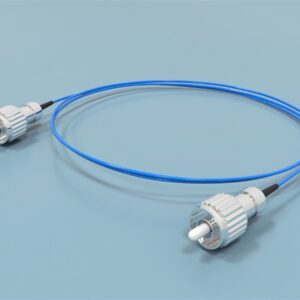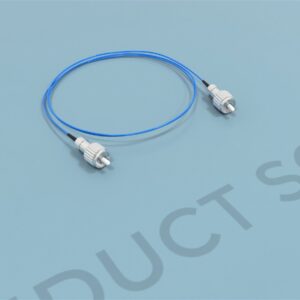$990.00
The Ant Sucrose Feeder is designed to examine how ants use private and social information during foraging. This device presents multiple food options, allowing researchers to observe how ants distinguish between different sources.
The setup includes a rectangular platform. On one of its shorter sides, two bridges connect the platform to two circular feeders located at the edges. Each feeder features a platform for holding food, such as a sucrose solution. On the opposite side, another bridge enables ants to access the apparatus.
Researchers can adjust the ant sucrose feeder to test whether ants rely on route memory or pheromones.
Mazeengineers provides the ant sucrose feeder.

MazeEngineers empowers preclinical neuroscience research with meticulously designed, customizable behavioral apparatuses. From manual classic mazes to fully automated smart systems, we provide the tools scientists need to capture high-quality, reproducible data for studies on learning, memory, anxiety, and depression.



Features |
Length of rectangular platform: 43cm |
Width of rectangular platform: 28cm |
Length of bridges: 21cm |
Width of bridges: 2cm |
Diameter of feeder: 6cm |
Length of food source platform: 3cm |
Width of food source platform: 3cm |

The Ant Sucrose Feeder is a tool used to study how ants utilize private and social information during foraging. By offering multiple food options, it tests the ants’ ability to distinguish between different sources. The feeder can be adjusted to challenge ants to rely solely on route memory or pheromones.
Ants’ feeding behavior is significantly influenced by the quality of the food source. Higher quality sources lead to more pheromone production, which creates a positive feedback loop and increases recruitment. However, if ants first encounter a poor feeder before a good one, switching between them can be difficult due to the strong pheromone trail established. The Ant Sucrose Feeder can simulate this trapping effect to study ants’ decision-making in terms of memory, spatial recognition, and trail-following behavior.
Both navigation memory and pheromone trails are crucial for ant foraging. Pheromone deposition aids in the mass recruitment of ants to a food source. When faced with a conflict between route memory and a pheromone trail, most ants prefer to follow route memory (Grüter, Czaczkes, & Ratnieks, 2011). The Ant Sucrose Feeder can be used in food choice experiments to examine the factors influencing ants’ collective behavior when presented with both public and private information.
This simple apparatus features a rectangular platform connected to feeders containing food sources. The platform is covered with paper to serve as a substrate for pheromone deposition. Other devices used to study memory, learning, and decision-making in ants include the Ant Y Maze, Ant Double Bifurcation T, Ant T Maze, and Ant Binary Tree Maze.
The setup comprises a rectangular platform with dimensions of 28 cm by 43 cm. On one of the shorter sides, two bridges measuring 2 cm by 21 cm connect the platform to two circular feeders, each with a diameter of 5.5 cm. These feeders include a 3 cm by 3 cm platform to hold a food source, such as a sucrose solution. A bridge on the opposite side of the platform allows ants to access the apparatus.
To enhance subject motivation, starve the ants for four days before testing. Before starting the trial, remove the papers that covered the platform and feeder sites during pretraining. Clean the apparatus with ethanol at the beginning and end of each trial to eliminate any pheromone traces. Replace the previously used card bridges with new ones. An external tracking and recording system, such as Noldus EthoVision XT, can be used with the Ant Sucrose Feeder to observe the ants’ behavior.
Position the apparatus close to the ants’ nest and cover its surface with white paper. Allow the ants to access the feeders via the bridges. After 5 minutes, add a 0.5 M sucrose solution to one of the feeder sheets. Record the ants’ positions on each feeder every 2 minutes for a duration of 15 minutes, replenishing the sucrose solution as needed. Mark 3 to 5 initial ants that move towards the feeder using acrylic paint. After 15 minutes, remove the sucrose solution and return the ants to their nest.
Place new papers on the platform and feeder areas. Apply a few drops of a 0.5 M sucrose solution to the right feeder sheet and a 1 M solution to the left feeder sheet. Monitor and record the ants’ movements towards both feeder sites every 2 minutes for a total of 30 minutes. After this period, return all the ants to their nest. Conduct two trials for each colony, using both feeder sites.
Czaczkes, Salmane, Klampfleuthner, and Heinze (2016) explored how social and private information influences ants’ decision-making. They used Lasius niger ants, divided into eight colonies, and employed the ant sucrose feeder to create three experimental setups:
The ant sucrose feeder tested the ants’ path preferences and decision-making using 0.5 M and 1 M sucrose solutions. The results showed that a higher number of ants consistently chose the route leading to the poorer food source (0.5 M sucrose solution) in all three setups. This indicated that route memory (private information) had a stronger influence over the acquired social information.
Beckers, Deneubourg, Goss, and Pasteels (1990) investigated trail recruitment in ants when foraging for two different food sources. They used Lasius niger and Tetramorium caespitum ants as subjects. Two sucrose solutions of varying concentrations (0.1 M and 1 M) were placed in sucrose feeders to analyze collective decision-making.
L. niger ants were tested under two conditions: in the first condition, both feeder sites provided a 1 M solution, while in the second condition, a 1 M source was introduced 50 minutes after a 0.1 M source. T. caespitum ants, on the other hand, were introduced to the 1 M sucrose solution after a 60-minute exposure to the 0.1 M solution.
The results revealed that when ants were offered solutions of the same concentration, they preferred to explore one site more extensively and keep the other as a reserve. When presented with different sucrose concentrations simultaneously, ants favored the richer source (1 M). However, if the 0.1 M sucrose was introduced before the 1 M source, a significant number of ants continued to exploit the poorer source due to the established trail. This tendency to follow the well-established trail to the poor source was observed only in Lasius niger ants. In contrast, Tetramorium caespitum ants eventually redirected to the richer source by relying on individual information transmission.
Following parameters are observed when using ant sucrose feeders
The ant sucrose feeder is designed to evaluate how ants use both private and social information. It is a straightforward and low-maintenance device that requires minimal handling and intervention from the experimenter during use. This apparatus is versatile, with applications in assessing the role of route information and memory in ants’ decision-making processes. It also serves as an effective tool for studying the influence of pheromones on trail recruitment and foraging behavior. Additionally, the ant sucrose feeder can be used to investigate the impact of food source quality on ants’ foraging activities.
Several factors can affect task performance, including species type, foraging strategy, and the presence of olfactory cues. Unintentional stimuli may also influence the results. To prevent disruptions, environmental conditions during testing should match the rearing conditions. Proper cleaning of the apparatus is essential to ensure accurate responses.
There are no questions yet. Be the first to ask a question about this product.